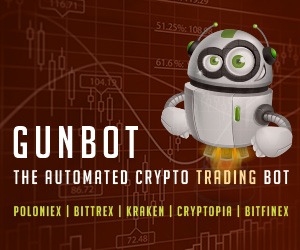Conversely, Bitcoin soft forks are all backwards compatible, meaning that obsolete versions of the client software are always supported. In theory, a user could fall into an extended coma and, upon waking, find that their Bitcoin wallet and full node would still be usable decades later. The same cannot be said for Ethereum.
According to the “New Oxford American Dictionary,” coercion is defined as “The practice of persuading someone to do something by using force or threats.”
Voorhees is correct that the coercion is classically defined as a physical persuasion that ordinarily cannot exist in transparent, open-source code. However, when that code is able to exponentially increase the output of physical proof-of-work mining, to the point of mining rigs becoming unusable , the code crosses a line from the virtual realm into the physical world and allows manipulation through new developer hard fork EIPs.
This threat of ratcheting up the physical force on mining rigs is what persuades miners to hard fork to the Ethereum Foundation’s hand-picked EIP . It’s not all that different from an authoritarian government saying they will physically render your equipment useless unless you comply with its brand new rules by a certain deadline. Your only other option is to defect and form a viable “classic” government.
Ethereum’s difficulty bomb threat obviously isn’t intended to harm human bodies, but it is intended to project a violent force on physical mining property. This in turn persuades both miners and users to comply with the developer roadmap. In this way, we can say that Ethereum’s difficulty bomb is indeed coercive.
An Ethereum difficulty bomb flow chart
This is particularly concerning when you consider that the largest ether holders can easily influence the developers who work for the Ethereum Foundation. In a recent interview with Peter McCormack, Ethereum Core Developer Lane Rettig recounted that he was often lobbied by large whales to accommodate their requests.
It is interesting to note that when (or if) Ethereum moves to proof of stake, the difficulty bomb is expected to be retired. At that point, the largest Ethereum whales will have the power to control the fate of Ethereum on their own, as proof of stake is a plutocratic consensus mechanism that is governed by the wealthiest holders — it literally means “proof of wealth.”
While there are those in the Ethereum community who are aware of this coercion , there are also those who are unphased by this apparent ethical oversight. After all, the difficulty bomb and the move to proof of stake is part of the public roadmap and a was disclosed to all parties involved. And how else are Ethereum developers supposed to ensure the project moves forward unless they have the ability to “force” their upgrades to be regularly installed?
Nevertheless, this past roadmap transparency does not make brand new EIPs, that can contain new and unexpected rules, any less coercive when they are forced by the impending threat of difficulty bombs. In short, Ethereum’s coercion may be seen as a necessary evil to push the project forward given its developers know that Ethereum is unfinished and unworkable in its current form .
Bitcoin Is Different
One might point out that Bitcoin halvings encourage miners to work harder for less reward every four years. However, this argument is dubious. Bitcoin’s issuance schedule was predetermined on day one, can no longer be influenced by its departed founder, and is not intended to force new rules on the protocol or its users.
Bitcoin is different. By having a fully-released project and a culture of soft forks, your bitcoin full node assures you the strongest user rights and guarantees your accessibility over time with backwards compatibility. Whales cannot pressure Bitcoin devs to forcefully change the rules on you with soft forks — you can simply dissent and keep using Bitcoin. And you can’t be defrauded by the majority of bitcoin holders. Your user rights as an individual user of bitcoin are yours and yours alone to uphold, by running your own full node, with relatively inexpensive hardware.
Bitcoin users and miners are not beholden to developers. The consensus needed to move the protocol forward is reached in a conservative manner — through users and miners signaling their acceptance of each update. And should you as a user disagree with those updates, it’s your right to dissent in Bitcoin and nothing ever has to change about your full node client if you want to keep transacting with outdated software. Bitcoin doesn’t care, it will keep on supporting your decision either way.
While running outdated software may not be ideal, it underscores the point that Bitcoin’s protocol is not coercive. The same cannot be said for Ethereum’s perpetual difficulty bombs, which constantly threaten miners with physical energy costs, it’s detonation reset again and again until its wealthy plutocrats can forcefully deploy their proof-of-wealth-based control over users. Ethereum plutocrats can have their difficulty bombs, aggresive deflation at the expense of lower classes and coercion.
Bitcoin is freedom from that tyranny. Bitcoin levates users above developers and miners. It empowers users to choose the protocol rules they want and levels the monetary system playing field for the first time in human history. Bitcoin is on a mission of hope, peace, abundance and prosperity . It’s time to plug in your full node and join this peaceful revolution.
This is a guest post by Level39. Opinions expressed are entirely their own and do not necessarily reflect those of BTC Inc or Bitcoin Magazine.





